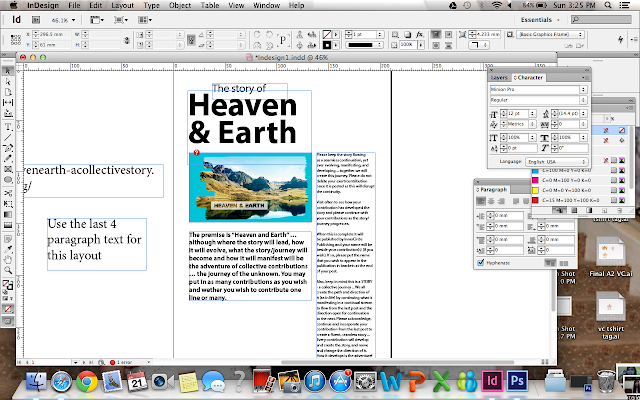 |
| One of the goodie bags given to the visitors. |
 |
| Contents of the goodie bags. Some goodie bags also included Teenage Magazine and notebooks which are not seen in the picture. |
 |
| A watch that was in the goodie bag. |
 |
| The goodie bags booth |
 |
| Wallpapers like this were placed all over SP. |
 |
| Backdrop of the stage. There was a crowd so I could not take a full photo. |
 |
| One of the many signages all around the campus. |
 |
| Banner that can be seen from the MRT station. |
What is the theme and the message?
T The theme of the Open House, "SP+U" with its tagline "With SP, it's So Possible" carries the message which states that SP has a very inclusive environment and wishes to let students explore their potentials and work towards success. All over SP, the colours used are mainly white and red, with many volunteers dressed in yellow. The colour theme gave me the impression that SP has a fun yet conducive study environment.
Is it effective? What makes it effect? What worked? Why?
I feel that it was effective because the consistent colour themes created a strong image and identity of the school. This helped created an impression on the visitors. Although some may find the colours boring, it still fit the purpose of and aim of the open house - which is to create an impression for them to come back.
Do you like it? Why/Why not?
Personally, I would prefer a more colourful environment to make the add more fun to the atmosphere. However, I feel that the event and designs had a very strong theme. It may look boring, but the consistency in the designs such as the colour and fonts (although not much variations) created a strong impression on the school. It strengthens the identity of SP as the same colours are seen throughout the whole campus.
· What could be done to improve it? Can you suggest improvements to it?
I noticed that there were not many CCA booths. As compared to last year's open house, the CCA booths were not many. Having many CCA booths with fun activities would help engage students and capture their interest. As they are mostly fresh from secondary schools, they would be enticed by the wide choices of CCAs offered in SP. We should utilise the availability of many CCAs to promote and capture visitors' interests.
· If any part of the physical items reinforce another medium like Video, Radio or Social Media, please elaborate.
On social media such as Instagram and Twitter, the hashtags #SPOH14 and #WhySP were widely used to promote SP and draw people to come to our school for the open house. It was an expected move but it was only right to benefit from this and utilise the social media to promote the school.
· Was there anything in particular that was innovative and really caught your attention and impressed you?
T I felt that the open house was a normal one. However, it was not boring. I would like to highlight the distribution of helium balloons as it drew the attention of many. There was a balloon booth where visitors could collect transparent helium balloons and write on their own balloons. Many people came over and asked where they could get the balloons.
The open house seemed boring at first because of the consistency in the colours. It was all red, blue or purple on white background all over. However, after analysing the designs, I realise that the consistency played a major role in building a strong identity of the school, which played a major role in creating an impression. In conclusion, I would like SP to continue with this theme as it is our identity.































